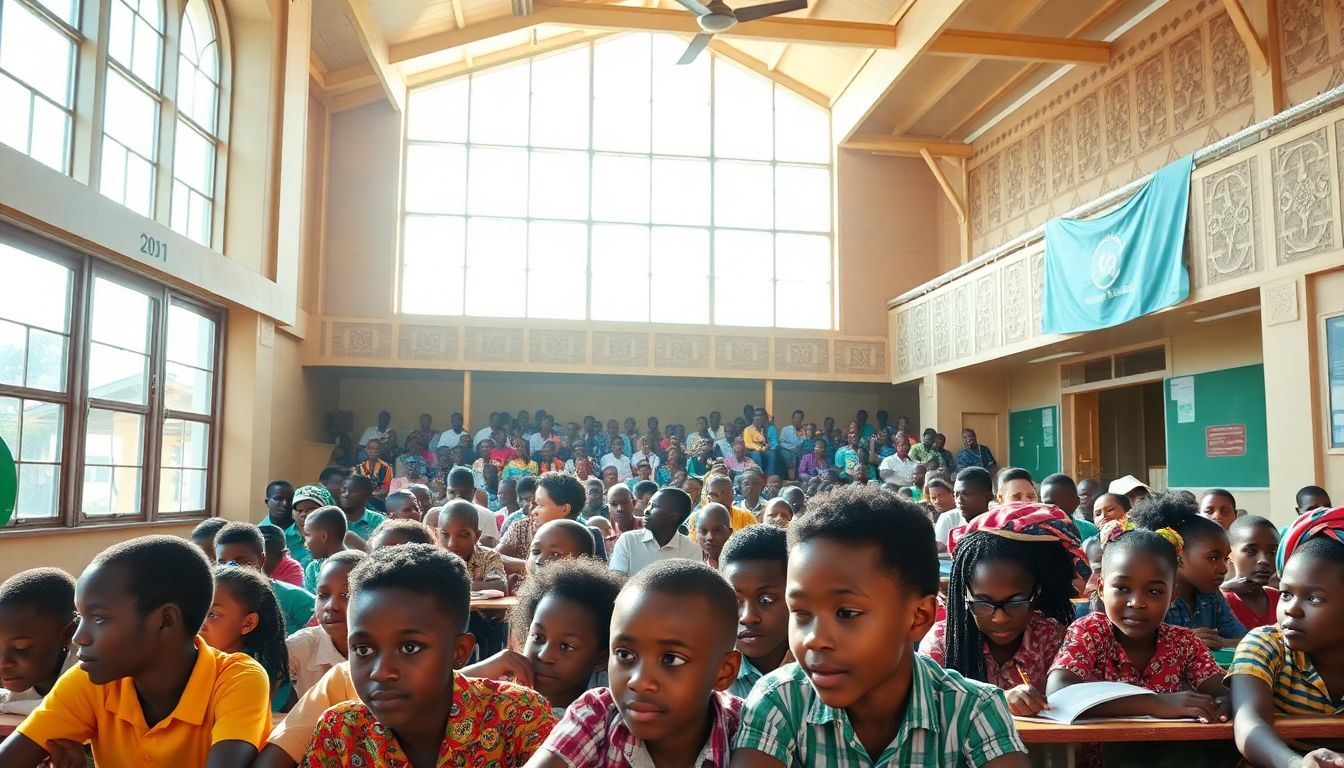
Nigeria, with a population of over 210 million, has an astonishing literacy rate of around 62%. This statistic reveals a backdrop of both promise and turmoil in the educational landscape. The Nigerian education system is intricate, rife with inconsistencies that reflect significant disparities between regions and socioeconomic classes. This article explores the challenges and opportunities within the educational sector today, shedding light on funding, access, curriculum, and emerging trends.
Funding and Resource Allocation in Nigerian Education
Government Funding and Budgeting
Government expenditure on education in Nigeria hovers around 6% of GDP, starkly lower than the global benchmark of 15%. This gap highlights the pressing need for increased investment to improve infrastructure, resources, and salaries for teachers. For instance, despite a population growth rate of 3%, funding remains stagnant, leading to underfunded institutions.
Private Sector Involvement
The private education sector has grown significantly, offering alternatives to public schools. With over 20% of students enrolled in private institutions, success stories like the Lekki British School illustrate a commitment to quality education. However, this dual system raises questions about equity and accessibility, as low-income families may struggle to afford private schooling.
The Role of International Aid
International organizations like UNESCO and UNICEF play a crucial role in shaping Nigerian education. Programs such as the Global Partnership for Education have funded initiatives that focus on teacher training and resource allocation. For example, the "Every Child Needs a Teacher" program has successfully trained thousands of educators, significantly impacting rural education.
Access to Quality Education: Equity and Inclusion
Geographic Disparities
Educational access in Nigeria varies greatly between urban and rural areas. Many rural schools lack basic infrastructure, qualified teachers, and instructional materials. According to recent data, urban schools can have an enrollment rate of up to 90%, while rural schools may fall below 40%.
Gender Inequality in Education
Gender disparities persist in educational attainment. The enrollment rate for girls in secondary school is approximately 60%, compared to 70% for boys. In areas like northern Nigeria, cultural barriers and early marriages further hinder girls' education, creating long-term challenges for gender equality.
Students with Disabilities
Inclusion for students with disabilities has improved, yet challenges remain. Legislation like the Discrimination Against Persons with Disabilities (Prohibition) Act aims to ensure equitable access but implementation is often lacking. Organizations such as the Inclusive Education Project advocate for better accommodations in schools, promoting understanding and support for all students.
Curriculum and Pedagogical Approaches in Nigerian Schools
Curriculum Relevance
The current national curriculum has faced criticism for its lack of alignment with the needs of today’s workforce. Efforts to include vocational training and entrepreneurship are underway, but there’s still a long way to go. Successful reforms, like the introduction of computer science in schools, show promise for preparing students for a global economy.
Teacher Training and Development
Quality teacher training is paramount for educational success. Sadly, many educators lack comprehensive training programs, affecting their ability to deliver quality education. According to a recent survey, only 40% of teachers have received formal training, making continuous professional development essential.
Technology Integration in Education
Technology use in schools is on the rise, especially with the advent of online learning platforms. Programs like the "Digital Classroom Initiative" have equipped many schools with necessary tools. For instance, schools in Lagos are utilizing e-learning to enhance learning experiences, making education more accessible.
Challenges and Reforms in the Nigerian Education System
Brain Drain
The emigration of skilled educators poses a significant threat. Many teachers leave Nigeria in search of better opportunities, contributing to a skills shortage. Recent estimates suggest that over 20% of Nigerian-trained teachers work abroad, leaving critical gaps in the education system.
Corruption and Mismanagement
Corruption is a persistent issue that hampers progress. Many schools suffer from misallocation of funds, with high-profile cases revealing misuse of educational resources. An example includes the mismanagement of textbook distribution funds, which leaves students without essential learning materials.
Security Concerns
Security threats, particularly from groups like Boko Haram, have caused school closures and disruptions. Areas in the Northeast have faced severe attacks, leading to a loss of many students’ lives and a decline in school attendance. Reports indicate a significant spike in dropout rates due to security concerns.
Emerging Trends and Opportunities in Nigerian Education
The Rise of EdTech
Educational technology is transforming learning environments. Startups like Andela and Quizizz are bridging gaps in traditional education. These platforms offer resources that cater to students' diverse needs, promoting a culture of learning outside the classroom.
Private Sector Partnerships
Collaboration between private companies and educational institutions is increasing. This partnership could lead to improved resource allocation and infrastructure development. For instance, partnerships with corporations for building schools have resulted in better learning environments.
Skills Development and Vocational Training
Vocational training addresses unemployment by equipping students with practical skills. Programs such as the "National Skills Development Program" show promising success, offering hands-on training that prepares students for various trades.
Conclusion
The Nigerian education sector faces a multitude of challenges, from funding issues and inequality to security threats and emigration. However, opportunities for reform and growth are abundant. Stakeholders must channel efforts into enhancing teacher training, expanding access, and fostering partnerships with the private sector. A commitment to change can lead to a brighter future for Nigerian education, with the potential to unlock the nation's vast human capital. Positive change is possible when we work together to shape a better educational landscape.